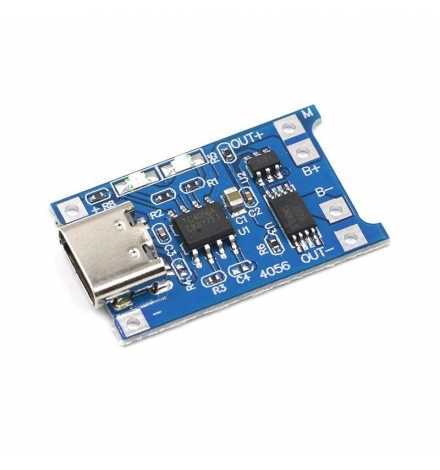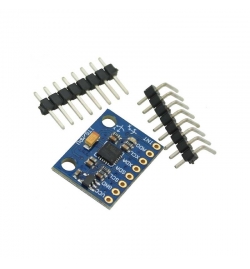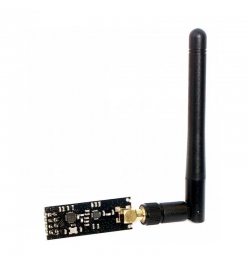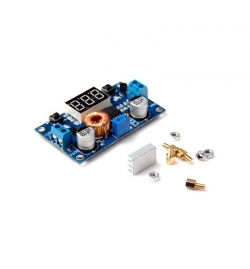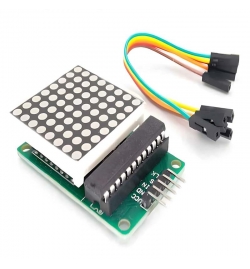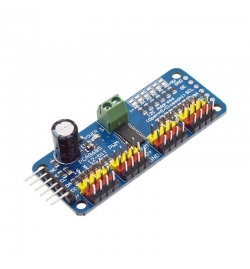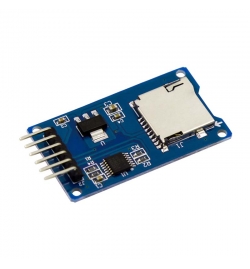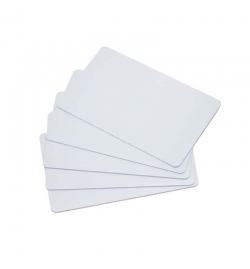This module is made for charging rechargeable lithium batteries using the constant-current/constant-voltage (CC/CV) charging method. In addition to safely charging a lithium battery the module also provides necessary protection required by lithium batteries. See below concerning the protection features this module provides.
Protection Features
This module uses the TP4056 Li-Ion charge controller IC and a separate protection IC. There are other types of modules on the market that use the TP4056 but lack any protection circuits or ICs to provide the necessary protection needed with lithium batteries. This module uses both the TP4056 and the DW01A Li-Ion battery protection IC, which together in combination provide the following protection features:
- Manage the constant current to constant voltage charging of a connected lithium battery
- Over-discharge protection - keeps your battery from being discharged below 2.4V, a healthy minimum voltage level for your battery
- If a connected battery has been discharged below 2.4V the module will cut output power from the battery until the battery voltage has been re-charged above 3.0V (the over-discharge release voltage), which at that time the module will again allow discharge of power from the battery to a connected load. Although the module cuts output power from the battery during an over-discharge situation, it still allows charging of the battery to occur through the parasitic diode of the discharge control MOSFET (FS8205A Dual MOSFET).
- Overcharge protection - the module will safely charge your battery to 4.2V
- Overcurrent and short-circuit protection - the module will cut the output from the battery if the discharge rate exceeds 3A or if a short-circuit condition occurs
- Soft-start protection limits inrush current
- Trickle charge (battery reconditioning) - if the voltage level of the connected battery is less than 2.9V, the module will use a trickle charge current of 130mA until the battery voltage reaches 2.9V, at which point the charge current will be linearly increased to the configured charge current.
Can be powered, for charging, from a micro USB cable or the + and - connections, see Power Supply Options Diagram below. The power source needs to be able to provide at least 1A for the charger to correctly charge a connected battery. Most modern phone/USB chargers can provide 1A or more; refer to the label on your phone charger to verify. If you use the micro USB connection, be sure to use a USB cable that is made to carry at least 1A.
Includes two indicator LEDs. Red LED indicates charging. Blue LED indicates charge complete.
The charge current can be configured externally with the Rprog resistor (R3, see below diagram). The datasheet for the TP4056 (refer to link in resources section below) includes a table and equation for what resistor values to use for configuring different charge currents.
The module uses a very small amount of current (in the micro amps) whenever it is connected to a battery. It is fine to leave it connected to a battery for long periods, but if you plan to not charge the battery within four months then we recommend disconnecting the module from the battery.
You can connect two lithium battery cells in parallel to form an equivalent single cell battery with a total capacity of twice that of the individual single cells, but we do not recommend connecting more than two cells at a time to this module. Refer to the Two Parallel Cell Connection diagram below. Care must be taken when setting up this type of configuration; refer to Precautionary Note 1 concerning precautions to connecting parallel cells.

NOTES
- Recommend for use with one cell battery.
- Due to the nature and characteristics of lithium-ion batteries Addicore is not responsible or liable for any damages, malfunction, injuries, fire, burns, or any other consequences or results that may occur with incorrect or correct use of this module or any battery, device, or item this module is used with, including following or using any instructions, guidance, or direction of any kind from Addicore or others. By purchasing this product you accept the preceding.
- Caution must be used when connecting two cells in parallel. Both cells must be at the same voltage level otherwise if one cell has a lower voltage than the companion cell the higher voltage cell will discharge into the lower voltage cell in an attempt to bring the two cells to the same voltage, which will eventually balance out, but if the voltages of the two cells differ enough the resulting current through both cells can be high enough to cause the cells to overheat or worse.
- When charging two parallel cells connected to this charge module the charge current through each cell will be half of the total charge current from the charge module, that is if each of the cells have equivalent voltage levels.
SPECIFICATIONS
- Charge Controller: TP4056
- Protection IC: DW01A
- Charge/Discharge Control MOSFET: FS8205A
- Charge Method: Constant-Current/Constant-Voltage (CC/CV)
- Input Supply Voltage: 4.5~6.0 V
- Constant Charge Current: 1 A
- Configurable with Rprog resistor (R3, see diagrams and TP4056 datasheet)
- Charge Complete (Float) Voltage: 4.2 V ±1.5%
- Overcharge Protection
- Overcharge Detection Voltage: 4.3 V ±50 mV
- Overcharge Release Voltage: 4.1 V ±50 mV
- Over-Discharge Protection
- Over-Discharge Detection Voltage: 2.4 V ±100 mV
- Over-Discharge Release Voltage: 3.0 V ±100 mV
- Overcurrent Protection
- Overcurrent Protection Threshold: 3 A
- Overcurrent Cutout Delay: 10~20 ms
- Short-Circuit Cutout Delay: 5~50 µs
- Trickle Charge (Battery Reconditioning)
- Trickle Charge Threshold Voltage: 2.9 V ±0.1 V
- Trickle Charge Current: 130 mA ±10 mA
- Dimensions: 29x17.3x4.3mm
- Weight: 1.6g
TP4056

